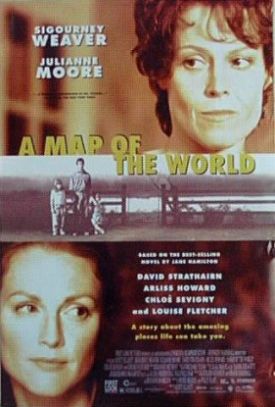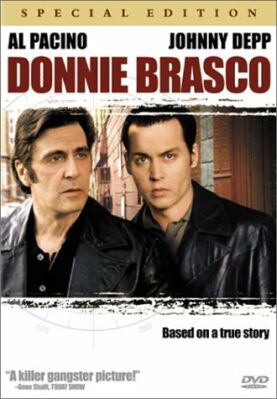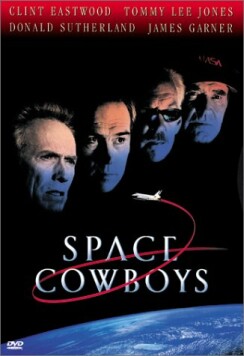Map of the World, A
A Map of the World, adapted by Peter Hedges and Polly Platt from the novel by Jane Hamilton and directed by Scott Elliott, is essentially an Oprah movie that rises above the level we might expect of such a thing—at least until the end when it tries to tidy things up with far too neat a conclusion. Up until that point, however, the chief impression the film makes is of the remarkable power and yet restraint of Sigourney Weaver’s performance as Alice Goodwin, a Wisconsin farmer’s wife and school nurse who suddenly and inexplicably finds herself accused of child molestation and thrown in jail. Completely innocent of the charge, she nevertheless finds an odd sense of satisfaction in being punished because of her guilt feelings about the earlier death of a friend’s child left in her charge. Few actresses could bring off such a psychologically delicate proposition as this, and even fewer could convincingly portray a woman who must be in her early 30s while pushing 50, as Miss Weaver was when she made the film.
David Strathairn, who has made something of a career speciality of playing understated foils for great screen divas (Jessica Lange in Losing Isaiah, Meryl Streep in River Wild, Kathy Bates and Jennifer Jason Leigh in Dolores Claiborne) does a predictably competent job as Howard, the hangdog farmer-husband whose sacrifice on account of his wife’s troubles of his farm and everything he has worked for in his life is made to seem almost as incidental as he is. Likewise, Louise Fletcher as his overbearing, do-gooding mother and Julianne Moore as the friend whose child is drowned while Alice is looking for her bathing suit are also deserving of praise. Regrettably, Chloë Sevigny, of whom I normally think very highly, is badly miscast as the slutty single mother who brings the molestation charges against Alice. She tries hard, but she just hasn’t got the hard malevolent edge this character needs.
The jail scenes were believable without being quite persuasive. That Alice’s fellow inmates who taunt and torment her should prove to have hidden beneath their rough exteriors a sympathetic vulnerability is just a little too predictably upbeat, and the courtroom scenes are not managed to bring out the full potential drama in such a charge or its comprehensive refutation. Miss Sevigny’s character is altogether too pathetic and easily vanquished, and the more general problem of false accusations of child abuse, which Dorothy Rabinowitz of the Wall Street Journal among others has done so much to expose, might as well not exist at all. The film’s tight focus on Alice’s mental processes doesn’t allow anything much in the way of a larger picture to emerge.
Above all, we have the problem of the final scene. In it we are presented with a picture of the battered Goodwin family seated around the dinner table above which is prominently displayed the map of the world drawn by Alice when she was a child. Here is how Jane Hamilton presents Alice’s voice in the novel, where this scene is not the conclusion: “When I was very young I used to sit before my map of the world imagining myself in an ideal country, alone and at peace. Now, if I could make the world over, I said to myself in my prayer—and as always to Howard—if I could make an impossible, new world, Howard, this is who you would see: You’d see Emma, and Claire [their daughters], and you’d see yourself, and me, all together, dancing on the porch with the shades down, outcasts making a perfect circle.”
In other words, that this new world is “impossible” is of its very essence. But what do you think? In the movies the impossible is always becoming possible. True, the little family isn’t dancing on the porch, they’re sitting round the family dinner table, which is round, while a voiceover commentary delivering something like the lines above makes us all cosy with the idea of the family circle that has become its own little world. Well, yes, but only in the sense that any tightly-drawn circle of intimacy can be a world unto itself. As a response to the serious matters that the rest of the film deals with it is very far from satisfactory. It would hardly have been worthwhile telling the story in the first place if its moral was to be that families ought to keep more to themselves and avoid the neighbors. But the movie is worth seeing for some excellent performances.
Discover more from James Bowman
Subscribe to get the latest posts to your email.







